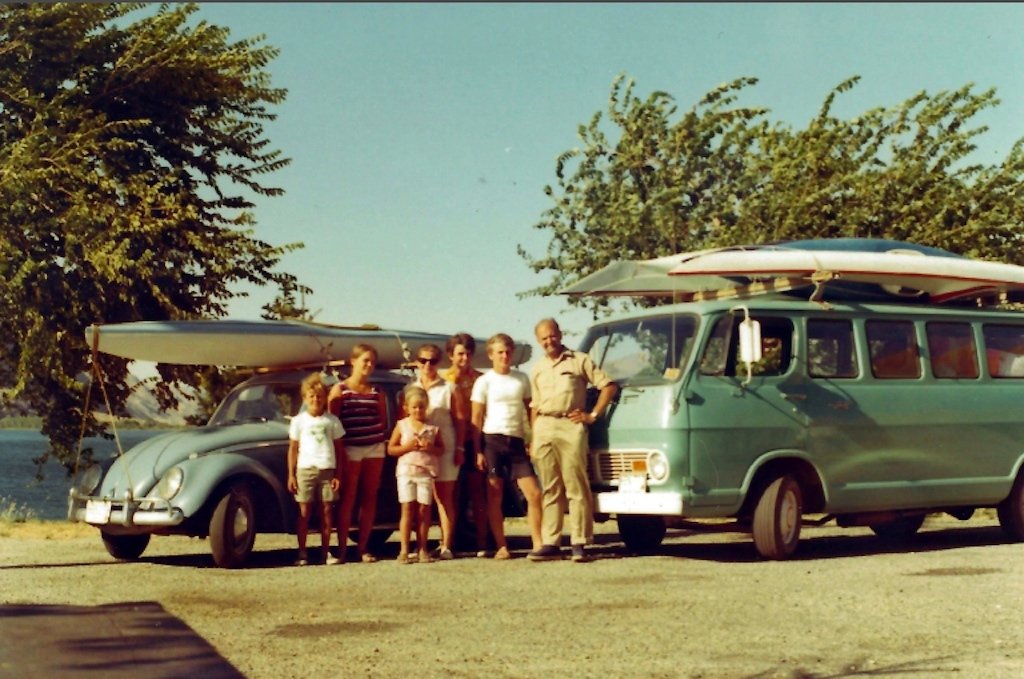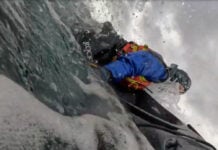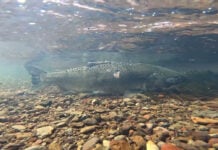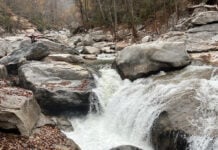Last week Werner Paddles debuted a nine-minute tribute film to the folks who make the company’s paddles in suburban Seattle. The project, four years in the making, is an homage to the “all the team members who work hard every day to put Werner Paddles in the hands of paddlers around the world.”
The film, titled We Are Werner, also provides a look inside a state-of-the-art production facility running full tilt to meet booming demand. Paddling Business chatted with Werner’s Marketing and Sales Director Taylor Robertson about the new film, the extended Werner family, and the challenges of staffing a paddle factory in Seattle’s white-hot labor market.
Jeff Moag: What was the impetus for making this video now?
Taylor Robertson: It’s actually been in the works for four years, and Covid kind of shut it down for two and a half years. This was the first available time slot that we were able to come in and film.
The impetus really was to pay tribute to the people behind the paddles. Our team is the key component of our business, and we wanted to show that our paddles are indeed made right here in Monroe, Washington, with care and attention to detail. I think it’s important that Werner is at ground zero for the outdoors, with Seattle being such an outdoor town with so many different waterways.
JM: I scouted the factory location on Google Earth, and it looks like you’re right at the main drop on the Skykomish, what is it, Boulder Drop?
TR: Yeah, we’ve got the Skykomish right out the door, and then a number of us are able to get out of work in the afternoon and go paddle Robe Canyon on the Stillaguamish, which is the most popular Class V run in the area. It’s just myself and some of our engineers paddling at that level, but we’re really trying to get more of our employees out on the water and bring their families out too. We threw a big party to celebrate the movie. We had close to 100 people last Thursday night and our staff was able to show their families where they work.
JM: Was that the red carpet premiere?
TR: It was. Before we sent it out to social media or anything else, we showed it to our staff. Based on the cheering and the yelling whenever a different employee came up on screen, everybody loved it. It was just a really good event and really good for camaraderie.
JM: It’s interesting you mention families, because Werner and Martha Furrer founded the company, and his first name is on every stick that goes out the door.

TR: At one point the whole Furrer family was working here — Werner Sr., Erich, Werner Jr. and Bruce. Bruce is still our president and sole owner, but the new family is what you see in this video. We are the ones now bringing Werner paddles to life and keeping the Werner family alive.
JM: How big is that family now? How many people do you have on payroll?
TR: Right now, we’re hovering right around 70. We have more women working here than men, and it’s a very diverse group of people.
JM: Hiring has been incredibly difficult during this pandemic, and that’s true whether you’re running a restaurant or a paddle factory. It’s no secret that Werner had some real challenges with staffing at the height of the pandemic. How are you working through that?
TR: There’s really no way to sugarcoat it. It was tough. And geographically we are in a hotbed of big business — we have Boeing, Amazon, Microsoft. So the hiring environment here is very difficult. We’ve really tried to sell our Werner family culture. We have a great benefits program, we offer competitive pay, and we’re continuing to adjust and listen to our employees.
JM: Did you have to raise wages and add benefits in order to re-staff after the first wave of the pandemic?
TR: We’ve always had amazing benefits. My wife is a teacher and I have a better health and dental plan than she gets. So we’ve always had good benefits and we continue to adjust as the labor market adjusts. You have to right now. If you don’t, you’re going to be left in the dust.
[ See all Werner paddles in the Paddling Buyer’s Guide ]
JM: To that end, is the film a recruitment video to a certain extent?
TR: The idea was always to pay tribute to the people behind the paddles. When we started the project there was no labor shortage, so it wasn’t necessarily intended to become a recruiting video. I think it works as a good brand video, though. It really humanizes the handcrafted aspect of our paddles, and brings the location to life.
JM: For almost everyone in paddlesports, the last couple of years have been both feast and famine at the same time: everybody wants to buy your stuff, and you just can’t make enough to meet the demand. Tell me how that played out for Werner.
TR: From a strategic position, integrity is everything. And one thing we did not want to do is get in a position of overpromising and not delivering. I would rather be upfront and not get into a position where our partners and their customers are waiting on an empty promise.
One of the other constraints is sourcing materials. It’s always in the back of your mind, and it’s something that you sometimes have no control over.
JM: In the film there’s a scene where a woman says she’s packing 400 paddles a day. Are you back up to pre-COVID production levels?
TR: I should pass on this question, because I don’t have the numbers in front of me and so much has changed. It’s really hard to compare to last year, and even more difficult to compare to 2019.

JM: Let me put it another way. At this point in time are you able to meet your demand?
TR: A good way to answer that is we’re at the mercy of our labor market and sourcing. I don’t know of any company who isn’t. We would love to be making many, many more paddles, but we can only build as many as those two elements will allow.
JM: Just before this call I was leafing through your history page, and I stopped on an image of Ed Gillet’s paddle — the guy who paddled to Hawaii back in 1987 — and he’s the most understated guy in the world. He signed it with a note saying something like ‘this paddle gave me total confidence in 15-foot seas and 40-knot winds.’ How important is it for Werner to maintain that legacy of quality even as you’ve got people lining up to buy every single stick you can pump out of that factory?
TR: It’s funny you bring that up, because the exact same paddle he used is hanging up in our showroom here about 20 feet from where I sit. And it’s my favorite paddle here, because he actually used the thing to paddle from Monterey to Hawaii.
On that note of quality, I’ll go back to integrity being everything. We’re not going to cut corners to push out more product. Everything this company was built upon is providing the best experience on and off the water, and we want to maintain that reputation for bomber reliability that we’ve worked many, many years to establish.
JM: Last question. The film seems pretty candid and unscripted. Is there a blooper roll in the works?
TR: You know, I had Ben Stookesberry working on that. We spent many nights editing this film, and it came to a point where he went back on the road. He just put it on the Grand Canyon, so there’s potential for that to come down the tube later.
JM: Speaking of keeping it in the family, I love that you had Ben and Chris Korbulic make the film. It’s not their usual extreme expedition genre, but Werner has been sponsoring their paddling shenanigans since day one.
TR: Right, and something worth mentioning is that what the public has seen for so many years is our team. That’s the front-facing portion in every discipline, whether it’s our touring, canoeing or whitewater athletes like Ben and Chris. So it was important with this film to show the back end — where Werner paddles come from, and the people who make them.








